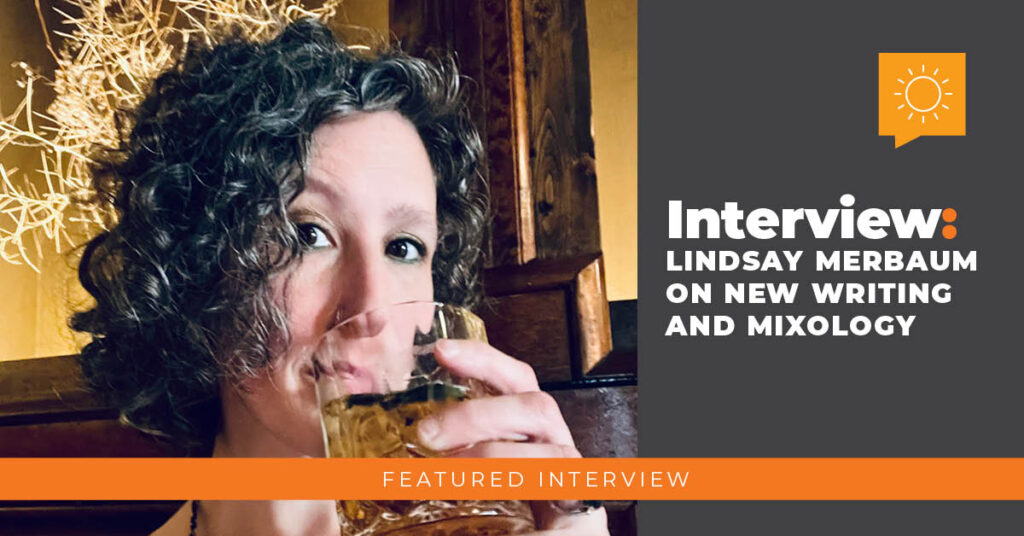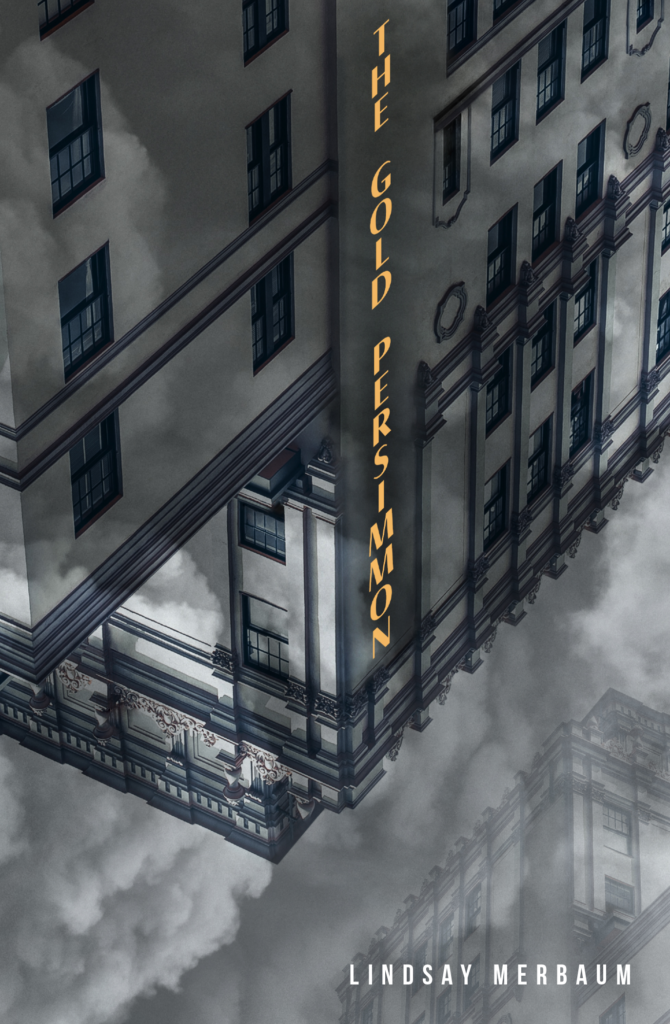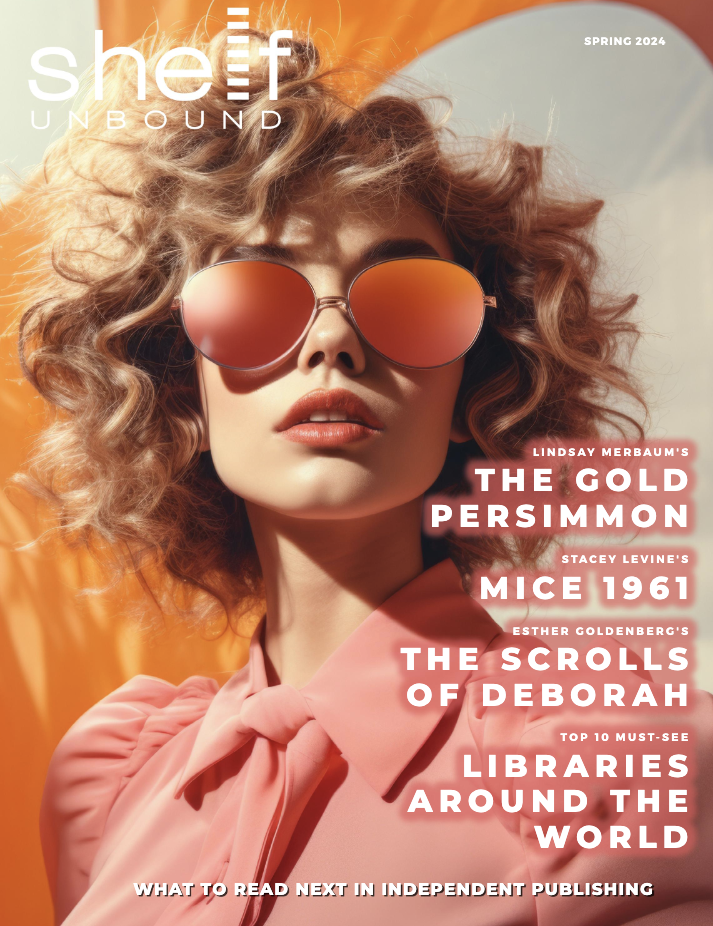By Christina Consolino

Persimmon, and her short fiction has appeared in multiple outlets, including PANK, The Collagist, Epiphany, Gargoyle, Day One, and more. She also writes interviews and essays, which have been published in Bitch Media, Bustle, and The Rumpus, among others. Lindsay is high priestess of home mixology, a skill she translated into a column (now retired) for Electric Literature called “Booktails from the Potions Library.” In this interview, she talks about defining feminist horror, creating memorable characters, and supporting diverse voices.
Tell us a little bit about your background and how you came to be a writer. Was it something you always planned on being? Did you encounter any struggles that made you doubt yourself?
LM: I think as soon as I understood what books were, I wanted my name on one. The doubts came much later. In my twenties, the doubt took the form of, Am I writing enough? Then it turned into, Why don’t I have a book yet? And now it’s, Will I ever reach a wider audience?
In an interview with The Rumpus, you stated that “myth-making is at the heart of [your] work,” and you’re a “mythology nerd.” What draws you to the myths, and how does your work reflect the myths?
LM: At a very young age, I started connecting with Greek myths. Somehow I understood that absorbing these stories, and being able to remember them, was part of something larger.
I recently read Emily Wilson’s new translation of The Iliad, and I was struck by a lack of glorification in a story of war, how minor characters were humanized with details about their lives, and how explicit gore did not seem thrilling, but sad and pointless. These epics are often songs of grief, exploring the inevitability of fate, which is really just life’s indifference. The themes are universal, and therefore timeless.
Your work is categorized as “feminist horror,” which you have defined as “an exploration of feminist stories through the tropes of horror.” Horror means different things to different people, so what do you consider horrific? What is it like to place yourself in the proper headspace to write horror, considering the vulnerability it requires?
LM: Feminist horror is a useful term because it speaks to the terror inherent in so much literature—it’s a lens through which to look at these narratives. The intro to feminist horror class I teach, for example, uses Beloved and The Handmaid’s Tale as our primary texts, books that are typically labeled literary fiction, or even sci-fi, but never horror. And yet both are rooted in absolute horror, derived from history. So much of that horror is also experienced in and around the body. At the heart of feminist horror is the body, the inescapable physicality that makes us vulnerable as unequal or lesser beings.
I’ve often said to readers that my horror is no more horrific than real life. Meaning the experience of being a woman, a Jew, a queer person, and a witch in this age naturally lends itself to horror. Fictional horror reconstitutes those feelings and experiences in potentially magical or surreal ways that are nevertheless grounded in lived experience. That can be hard to write, but there’s power in it.
The characters you create, whether in your novel, The Gold Persimmon, or in your short stories, are memorable and complex. Who inspires these characters? What message do you hope these characters send?
LM: Thank you! Some say all characters are composites of the writer. I think there’s truth to that, in the sense that all fiction is a reconstitution of the writer’s experience.
Fiction is also where I let loose the unseen aspects of myself, the unknowable I can only express through storytelling. Of course, I’m also influenced by real-life characters, such as the many complicated women I have known. Right now, I’m focused on flawed characters who might be angry, selfish, or make bad decisions. You know, as humans do.
In the past several years, the publishing industry has put some effort into supporting diverse voices, which includes those of the LQBTQIA community. In your opinion, what are we getting right? What are we getting wrong?
LM: Publishing is such a feral beast. No one knows what will sell, the big presses are getting harder and harder to break into, while also becoming more risk averse, and queer lit is by nature risky. As a result, more small presses are cropping up, more writers are self-publishing or hybrid publishing. A lot of voices from the margins are coming into focus. That said, the Big 5 have produced some incredible queer books in the past few years. But writers of color are still hugely marginalized, not to mention queer writers of color. My hope is the indie presses will gain further strength and become a powerful bastion of the most diverse, most interesting voices.
In addition to writing, you’re an experienced mixologist. How did you become interested in mixology? Does it feed the same creative side of you as writing, or does it target something different?
LM: Mixology is a physical, tangible art, which provides a wonderful counterbalance to the solitary and cerebral act of writing. I’ve enjoyed painting for similar reasons, but the temporal nature of drinks is significant too.
I started out as a hobby mixologist. At that time, I lived in San Francisco. I was dating my spouse, and we went to a lot of delightful cocktail bars. I was excited about what I was tasting, so I started trying to make my own drinks at home. I started out with champagne cocktails, then branched out to making up my own recipes, but I didn’t really begin to take it seriously until I crafted a set of six cocktails and mocktails to accompany the release of my first novel, The Gold Persimmon. It was a lot of work to record and quantify recipes, complete with photos, but I also found it to be a great deal of fun. I volunteered to make drinks for other authors’ books, and that was really the start of Pick Your Potions, the small business I co-run with my spouse.
Since then, we’ve collaborated on tarot-like recipe decks of cocktail and mocktail recipes, inspired by the Wheel of the Year, the Zodiac, and Mortal Goddesses—with mocktail recipes derived from the life stories of currently living, badass, public figures like Gloria Steinem, Oprah, Patti Smith, Margaret Cho, Laverne Cox, and more.
The cocktails and mocktails you pair with books is an ingenious idea! Have you altered your approach since you first started?
LM: Though I got the idea as promo for my own book, it really became a next-level project when I began to look at other people’s books. I studied their texts and chose ingredients that derived specifically from important themes and symbols. Then I started writing plot summaries and explanations of how the ingredients tied in to accompany the recipes. And I got a lot better at food photography. I’ve acquired so many props since 2019.
What’s next for you?
LM: I’m so glad you asked! I’m really excited to continue working with Creature Publishing to produce two more novels, in 2025 and 2026-ish. The first is a coming-of-age story about witches, a terrifying goddess, and a magical Midwestern queer bar. The second, which I’m writing now, concerns polyamorous emotional vampires on an all-genders queer cruise around the Black Sea.

Clytemnestra is a check-in girl at The Gold Persimmon, a temple-like New York City hotel with gilded furnishings and carefully guarded secrets. Cloistered in her own reality, Cly lives by a strict set of rules until a connection with a troubled hotel guest threatens the world she’s so carefully constructed.
In a parallel reality, an inexplicable fog envelops the city, trapping a young, nonbinary writer named Jaime in a sex hotel with six other people. As the survivors begin to turn on one another, Jaime must navigate a deadly game of cat and mouse.
Haunted by specters of grief and familial shame, Jaime and Cly find themselves trapped in dual narratives in this gripping experimental novel that explores sexuality, surveillance, and the very nature of storytelling.

Continue Reading…
Article originally Published in the March / April / May 2024 Issue: Indie in Bloom.
